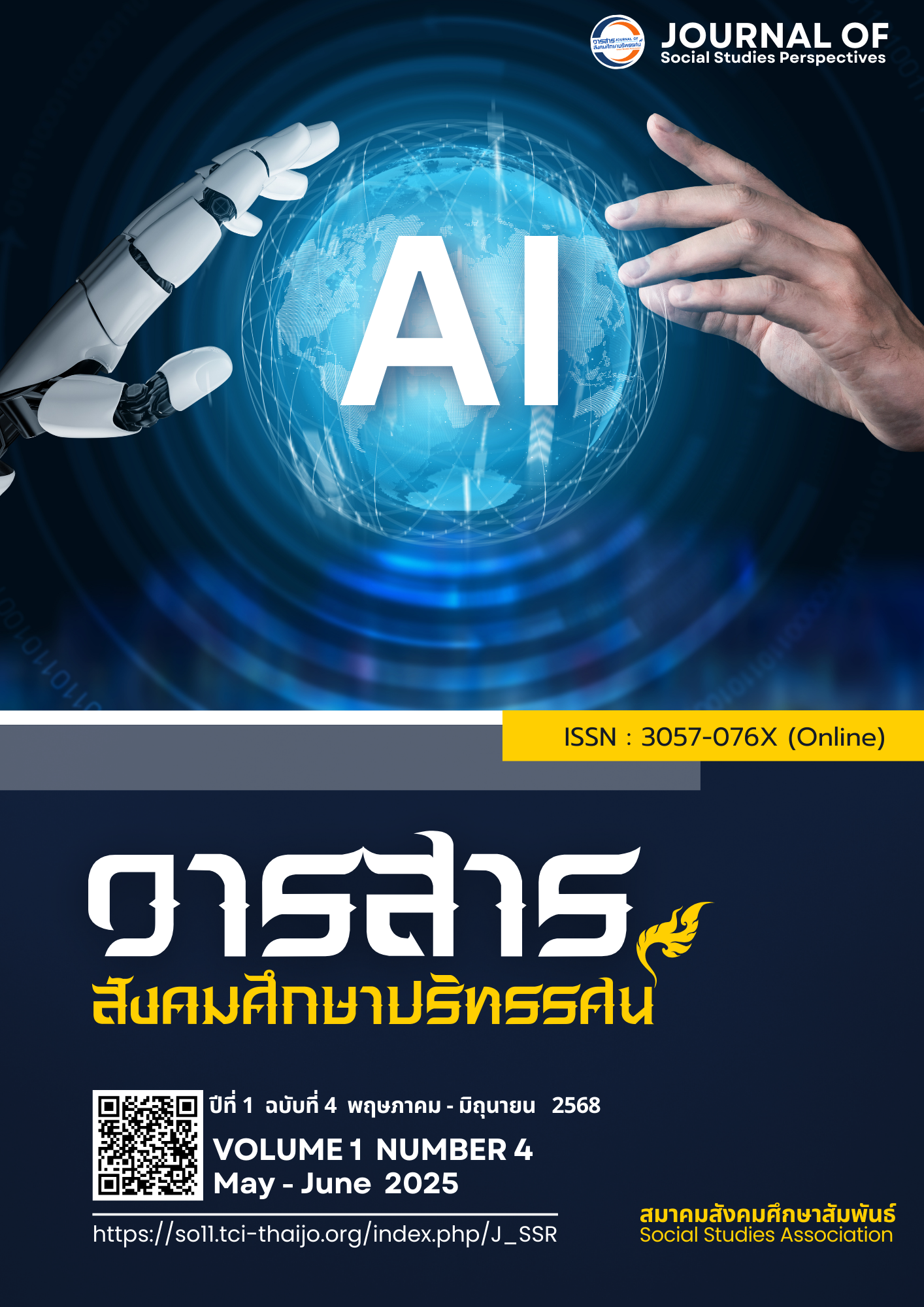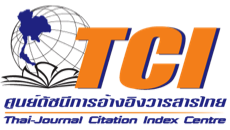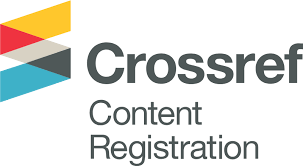THE DEVELOPMENT OF A LEARNING MANAGEMENT MODEL ON DIALOGUE BASED TO ENHANCE SINGING ABILITY OF MIDDLE SCHOOL GRADE 9 STUDENTS OF SARASAS WITAED NAKHONPATHOM SCHOOL NAKHONPATHOM PROVINCE
DOI:
https://doi.org/10.64186/jsp1483Keywords:
The Development of a Learning Management Model , Dialogue , Singing AbilityAbstract
The purposes of this research were to: 1) to develop of a learning management model on Dialogue based to enhance singing ability of middle school grade 9 students of Sarasas Witaed Nakhonpathom School Nakhon Pathom province and 2) to evaluate the effectiveness of a learning management model on Dialogue based to enhance singing ability of middle school grade 9 students of Sarasas Witaed Nakhonpathom School. The samples consisted of grade 9 students students from Sarasas Witaed Nakhonpathom School, Office of the Private Education Commission, Studying in the 1st semester of academic year 2023, 1 classroom, totaling 15 people. The research instruments composed of a learning management model for a learning management model on Dialogue based to enhance singing ability of middle school grade 9 students of Sarasas Witaed Nakhonpathom School, a manual, lesson plans, an assessment of singing ability, and satisfaction survey. The data was analyzed by mean, standard deviation, and content analysis. The results were as follows: 1) “PARAS Model” was a learning management model on Dialogue based to enhance singing ability of middle school grade 9 students of Sarasas Witaed Nakhonpathom School. The model was approved to conduct to the samples. 2) The effectiveness of the PARAS Model indicated that 2.1) The students’ singing ability was at a high level after implementing the model. 2.2) The students’ satisfaction was at a high level after implementing the model.
References
Bohm, D. (1991). On dialogue. Routledge.
Boud, D., Keogh, R., & Walker, D. (1985). Reflection: Turning experience into learning. Routledge.
Boytim, J. F. (2003). The private voice studio handbook: A practical guide to all aspects of teaching. Hal Leonard. [in Thai]
Boonthasnakul, D. P. (1993). Saan fan duay siang phleng [Making dreams come true through songs]. Baan Phleng.
Chokthamrong, C. & Sittiwong, Y. (2015). Using dialogue activities and deep listening to enhance information literacy skills for generation Y: A tri-party collaboration experience.
Collins, J. (n.d.). Fundamental aspects of singing: Posture, breathing, and vocal health.
Dick, W., & Carey, L. (2009). The systematic design of instruction (7th ed.). Pearson.
Freedman, S. (2000). Transformations through dialogue: The art of conversation in education. Teachers College Press.
Isaacs, W. (2004). Dialogue: The art of thinking together. Crown Business.
Joyce, B., & Weil, M. (2003). Models of teaching (7th ed.).
Ketsaklao, M. (2019). An interactive learning model for art students using the aesthetic conversation process to enhance symbolic values in creating contemporary community art [Doctoral dissertation, Naresuan University]. ThaiLIS. https://tdc.thailis.or.th
Khamanee, T. (2019). Effective teaching strategies and techniques. Chulalongkorn University Press. [in Thai]
Kruse, K. (2009). Introduction to instructional design and the ADDIE model. e-LearningGuru. http://www.e-learningguru.com/articles/art2_1.htm
Maslow, A. H. (1970). Motivation and personality (2nd ed.). Harper & Row.
Merrill, M. D. (2002). First principles of instruction. Educational Technology Research and Development, 50(3), 43–59.
Monchai, P. (2009). Dialogue in practice: Combining Western philosophy with Buddhist practice.
Nilphan, M. (2015). Educational research methods (9th ed.). Educational Research and Development Center, Faculty of Education, Silpakorn University. [in Thai]
Office of Academic and Educational Standards. (2008). Basic Education Core Curriculum B.E. 2551 (Revised B.E. 2560). Ministry of Education (Thailand).
Office of Academic and Educational Standards. (2010). Guidelines for secondary music education. Ministry of Education (Thailand).
Office of the Thailand Knowledge Park. (n.d.). Royal speeches related to music education.
Patpon, M. (2014). Course materials for the Seminar on Coaching Innovation for Cognition: Chapter 14, creative feedback in Thailand.
Department of Multidisciplinary/Interdisciplinary Studies, Graduate School, Srinakharinwirot University.
Peckham, A. (2000). The contemporary singer: Elements of vocal technique. Berklee Press.
Phonwathananusorn, P. (2022). Motivation and engagement in secondary school music classes.
Photngoen, V. (2013). The use of aesthetic dialogue to develop question-asking abilities among undergraduate students in elementary education, Faculty of Education, Silpakorn University in Thailand. Silpakorn Educational Research Journal, 5(1), 21–33.
Piaget, J. (1970). Science of education and the psychology of the child. Orion Press.
Phosrithong, A. (2020). Fundamentals of music instruction. Department of Curriculum and Instruction, Srinakharinwirot University. [in Thai]
Sirisai, S. [Sorot]. (2006). Dialogue: A new dimension for local community forums in Thailand. https://repository.li.mahidol.ac.th/handle/123456789/56396
Suttajit, N. [Narut]. (1998). Music and child development. Chulalongkorn University Printing House.
Suttajit, N. [Narut]. (2017). Withiwithayakan son dontri [Music teaching methodology] (2nd ed.). Chulalongkorn University Press. [in Thai]
Thanawut, W. (2004). Huachai mai, chiwit mai su itsarapap lae khwamsuk chapplan [A new heart, a new life, towards immediate freedom and happiness]. Pitisuksa Publishing. [in Thai]
The Royal Society. (2013). Definitions of “dialogue”: Levels of communication. The Royal Society of Thailand.
Vygotsky, L. S. (1978). Mind in society: The development of higher psychological processes. Harvard University Press.
Downloads
Published
How to Cite
Issue
Section
Categories
License
Copyright (c) 2025 Journal of social studies perspectives

This work is licensed under a Creative Commons Attribution-NonCommercial-NoDerivatives 4.0 International License.
The article is published under the Creative Commons Attribution-NonCommercial-NoDerivatives 4.0 International (CC BY-NC-ND 4.0) license, which allows others to share the article while giving appropriate credit to the author. It prohibits the use of the article for commercial purposes or the creation of derivative works. Any other reuse or reproduction requires permission from the journal.









